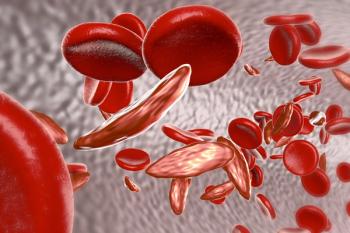
Clinical
Latest News
Latest Videos

CME Content
More News

Researchers outlined 3 mechanisms in which PM2.5 induces asthma, all of which they say are tied to oxidative stress balance.

A review of 41 articles indicated that leveraging zinc supplementation in patients with sickle cell disease (SCD) is a safe and potentially effective approach for these patients.

Mesenchymal stem cells are known to promote tumor growth and metastasis in multiple myeloma (MM), but a recent study found they may also inhibit the effects of the corticosteroid dexamethasone, a common medication for the hematologic malignancy.

Patients with reduced DNA mismatch repair protein expression were more likely to respond to immune checkpoint inhibitors (ICIs), although this study had a small sample size.

Dr Lopes, OB-GYN and payer, discusses a focus on screening and prevention and availability of contraception among health plans in women’s health.

Ayman Al-Hendy, MD, PhD and Maria Lopes, MD, MS discuss common concerns that women seek care for during their reproductive years, including uterine fibroids, endometriosis, and unintended pregnancy.

Monitoring glycemia in chronic kidney disease comes with challenges, but emerging strategies warrant more research in this patient population.

A new review article shows positive trends in survival, as scientists better understand the different types and symptoms of pulmonary arterial hypertension (PAH).

Interviewing both patients and providers, researchers found that while having effective treatments for hidradenitis suppurativa (HS) took precedence across the board, some priorities varied among the 2 groups.

Key opinion leaders discuss navigation through challenges with appropriate coding for TRD treatment.

Carrie Jardine and Martin Rosenzweig, MD, share considerations for benefit design in behavioral health.

Eliot Brinton, MD, provides a warning concerning “maximally-tolerated statin dosing” and provides general guidance for optimal dosing.

Ian Riddock, MD, describes the high-risk patient with ASCVD that is appropriate for early intensive lipid lowering.

Dr Richter delves into how we can better educate patients and physicians on RWE to improve decision-making.

The panel moves the discussion to non-comparative RWE and how that can play a part in their decision-making for MM therapy.

CDC launches a new center to forecast infectious diseases; Alabama reaches settlement with opioid manufacturers; lack of diversity seen in Alzheimer disease trials.

With an increasing number of longer-term survivors treated with chimeric antigen receptor (CAR) T-cell therapy for non-Hodgkin lymphoma (NHL), more research is needed to confirm its effects on neurocognitive performance.

The lack of effective long-term control of eosinophilic esophagitis (EoE) highlights the unmet need for targeted systemic therapies.

A new review article highlights a number of roles for B1 cells, including antibody secretion and the stimulation of CD4+ cells.

Patients who received early immunosuppressive therapy for their rheumatoid arthritis (RA)–associated peripheral ulcerative keratitis experienced earlier inflammatory control, fewer recurrences, and better visual outcomes.

Investigators fashioned a zone-model predictive controller to evaluate adjustment of closed-loop glycemic control during pregnancy, as both glycemic control and insulin adjustment continually change throughout gestation.

A recent study found that a composite end point developed by the researchers gave a single and simultaneous measurement of the overall benefit of treatment for paroxysmal nocturnal hemoglobinuria (PNH).

Expression of the chemokine receptor was linked with better overall survival.

Patients may have unrealistic expectations of how a new treatment or procedure may help them, and the conversation between the patient and physician is crucial for setting expectations, explained Robert G. Fante, MD, FACS, president of the American Society of Ophthalmic Plastic & Reconstructive Surgery and facial plastic surgeon and cosmetic surgeon, Fante Eye & Face Centre in Denver, Colorado.

Davey Daniel, MD, chief medical officer, OneOncology, speaks on the knowledge, infrastructure, and payer-related barriers that are limiting the use of genomic testing in the management of patients with lung cancer.
















































